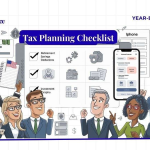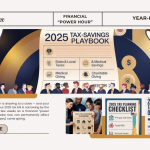A cost-benefit analysis (CBA) is essential for anyone making business decisions, managing projects, or creating policies. It helps you evaluate how much something will cost versus the benefits you expect to gain so you can make smarter, more informed choices.
This guide will show you how to quickly conduct a cost-benefit analysis, considering an investment, a new project, or a policy change.
What is a Cost-Benefit Analysis?

A cost-benefit analysis compares a decision’s costs with its benefits to determine whether they are worth the costs. This process is helpful when resources are limited, and you want to ensure that you make the best decision for the future.
Example: Imagine your company is thinking about buying new software. A cost-benefit analysis would compare the price of the software to the benefits, like more productivity, lower labor costs, or better customer service. If the benefits are higher than the costs, the investment makes sense.
For more on CBA, check out this article from Investopedia on Cost-Benefit Analysis.
Cost-Benefit Analysis Tool
Result
Please enter costs and benefits to calculate the result.
Step 1: Identify and List All Costs
Some time recently, you can calculate the benefits; you are required to list all the costs included. These are coordinated or backhanded, short-term or long-term. Begin by composing down each conceivable cost.

- Direct Costs: These are easy to identify because they’re directly tied to the project, such as buying equipment or paying for materials.
- Indirect Costs: These are secondary expenses, like administrative costs or the time needed for training.
- Recurring Costs: These are ongoing costs, like maintenance or subscription fees.
- Opportunity Costs: Consider what you’re missing out on by choosing this option instead of another.
Example: In the software case, direct costs include the price of the software and the cost of installation and training. Indirect costs could be employees’ time learning how to use the new software.
Read more about direct vs. indirect costs at AccountingTools.
Step 2: Identify and List All Benefits
You must consider the benefits now that you’ve listed all the costs. These can be tangible (easy to measure) or intangible (more challenging but still meaningful).

- Tangible Benefits: These are measurable in financial terms, like increased revenue or cost savings.
- Intangible Benefits: These might be improved employee morale or customer satisfaction.
Example: The computer program might bring significant benefits, like higher productivity or diminished labor costs. Intangible benefits include ways to improve group resolve or progress client advantage.
For a deeper dive into tangible vs. intangible benefits, check out this article in Harvard Business Review.
Step 3: Quantify Costs and Benefits

Once you’ve identified the costs and benefits, the next step is to assign a dollar amount to each one. Some benefits, especially intangibles, may be hard to quantify, but giving them a realistic value is essential. Base your estimates on reliable data, like industry standards or expert advice.
Example: If the software costs $10,000 to purchase and $1,000 per year for maintenance, and it’s expected to save $15,000 annually in labor costs, the return on investment is easily visible.
You can use Excel or Google Sheets to create a simple financial model.
Step 4: Compare the Costs and Benefits

Now that you’ve assigned values to costs and benefits, compare them. This is the core of the cost-benefit analysis. If the benefits exceed the costs, the project is likely worth pursuing. You can find the net benefit by subtracting total expenses from total benefits.
Also Read, The Future of Finance: What’s Next for the U.S. by 2025?
Example: If the computer program costs $10,000 but passes on $15,000 in benefits yearly, the net advantage is $5,000 yearly. If the costs and benefits are comparable, other components, like chance or key destinations, might affect your choice.
Learn about calculating net benefits at Investopedia.
In 2025, the U.S. Department of Energy reported that municipalities investing in solar power saw an average return of 15% annually through energy savings and economic growth. This shows how a well-done cost-benefit analysis can lead to innovative, sustainable decisions.
Step 5: Make the Decision

After comparing the costs and benefits, you’ll be ready to decide. If the benefits clearly outweigh the costs, go ahead with the project. But if the costs outweigh the benefits, you should rethink it or consider alternatives.
Example: If the computer program offers a strong return on investment, it makes sense to proceed. If the benefits are negligible or short-lived, it might be best to delay the choice or look for another program arrangement.
For additional guidance, explore the decision-making process at The Decision Lab.
Real-World Case Study: Cost-Benefit Analysis in Action
Related Topic – Hidden Tax Breaks #5: The Energy-Efficient Home Credit
To see how a cost-benefit analysis works, consider this example of a local government deciding whether to invest in renewable energy like solar power. The costs include purchasing solar panels, installation, and maintenance, while the benefits include long-term savings on energy, reduced emissions, and job creation.
Learn more about solar power investment and its benefits at Energy.gov.
Recommended Tools for Cost-Benefit Analysis

Here are some tools that can help you perform a cost-benefit analysis more easily:
- Excel or Google Sheets are great for creating simple spreadsheets to list and calculate costs and benefits. You can use formulas to calculate the Benefit-Cost Ratio (BCR) or Net Present Value (NPV). More details in Microsoft Excel.
- CBA Templates: There are plenty of templates available online that you can use to speed up the process. Smartsheet.
- Project Management Software: Tools like Trello or Asana can help you track progress and stay within your cost limits.
- Financial Modeling Tools: If you’re working on a more significant project, tools like Solver or Crystal Ball can help you do more complex analyses, such as Monte Carlo simulations. Learn more at Oracle Crystal Ball.
Frequently Asked Questions (FAQs)
Q1. What is the reason for a cost-benefit investigation?
A1. It matters when you decide whether the benefits of a choice or extension exceed its costs, directing you toward more brilliant decisions.
Q2. Can a cost-benefit examination work for little ventures?
A2. Yes! Cost-benefit investigation can be fair as applicable for smaller ventures, guaranteeing you get the monetary effect before choosing.
Q3. How do I measure intangible benefits?
A3. Intangible benefits can be tricky to measure, but you can use estimates or proxies. For example, you could estimate how improved employee morale or customer loyalty might increase productivity or sales. Check out more on measuring intangible benefits.
Q4. How do I perform a sensitivity analysis?
A4. Sensitivity analysis helps you understand how changes in your assumptions (like cost or benefit values) affect the overall result. Adjusting the numbers slightly lets you see how sensitive your outcome is to changes. More on sensitivity analysis here.
Q5. What should I do if the costs outweigh the benefits?
A5. If the fees exceed the benefits, it may be a poor investment. But before deciding, consider non-financial factors or explore ways to reduce costs or increase benefits.
Conclusion: Make Smarter Decisions with Cost-Benefit Analysis
A cost-benefit examination is a competent instrument for making well-informed, data-driven choices. By evaluating costs and benefits, you can ensure your choices are monetarily sound and balanced with your long-term goals.
Whether making a business venture, arranging an unused extension, or considering an arrangement alteration, this preparation will help you make superior, more certain choices.
Guide For Tax Cut: The Ultimate Guide to Tax Deductions You Didn’t Know About!
Actionable Takeaways:

- Capture all costs and benefits sometime recently, making your decision.
- Quantify both costs and benefits in budgetary terms to make comparisons simpler.
- Quantify both costs and benefits in budgetary terms to make comparisons simpler.
- Use real-world examples and data to back up your analysis.
Thank you for reading this post, don't forget to subscribe!






